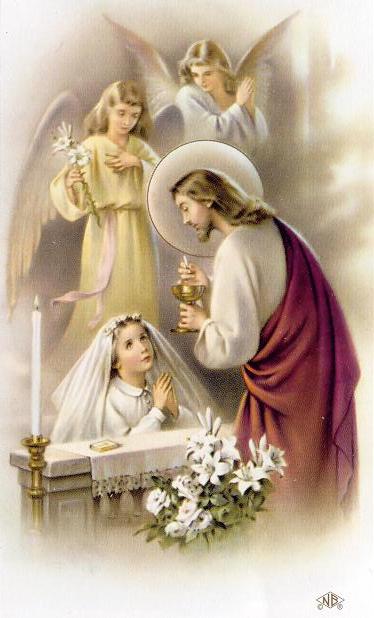HOLY EUCHARIST
The doctrine of the Holy Eucharist is made up of:
1. Doctrine about the Eucharistic sacrifice. Holy Mass is a real sacrifice, instituted by Christ at the Last Supper. It represents Christ's sacrifice of the Cross, but in an unbloody manner. Priest and victim are both Christ, who offers himself through the priest. The laity also offers the sacrifice, but does not have the power to transubstantiate. The Eucharistic sacrifice is offered to God in praise, thanksgiving, petition and atonement, for the living and thedead. Saints may also be commemorated in honor and petition. The Church has the responsibility of determining the rites and prayers to be observed. The liturgy as a whole is the public worship by the mystical Body of Christ. In every liturgical activity Christ is present, in a manner that must be properly interpreted.
2. Doctrine about the Eucharistic sacrament, sacrificial meal and sacrificial food: The Holy Eucharist is a true sacrament, instituted by Christ. Christ is really present in the Holy Eucharist, even whennot being received. It is therefore to be honored and adored. The whole Christ is present in either kind and is received by the communicant. For the wheat bread and grape wine are transubstantiated by the ordained priest into the flesh and blood of Christ so that only the appearance of bread and wine remains. The sacrament effects union with Christ; it is nourishment for the soul, gives increase in grace and remits venial sin and punishment.

